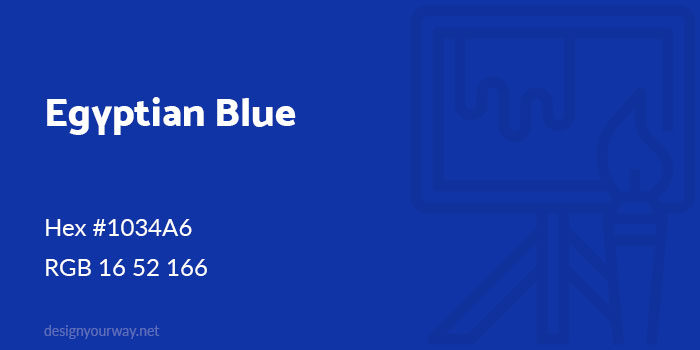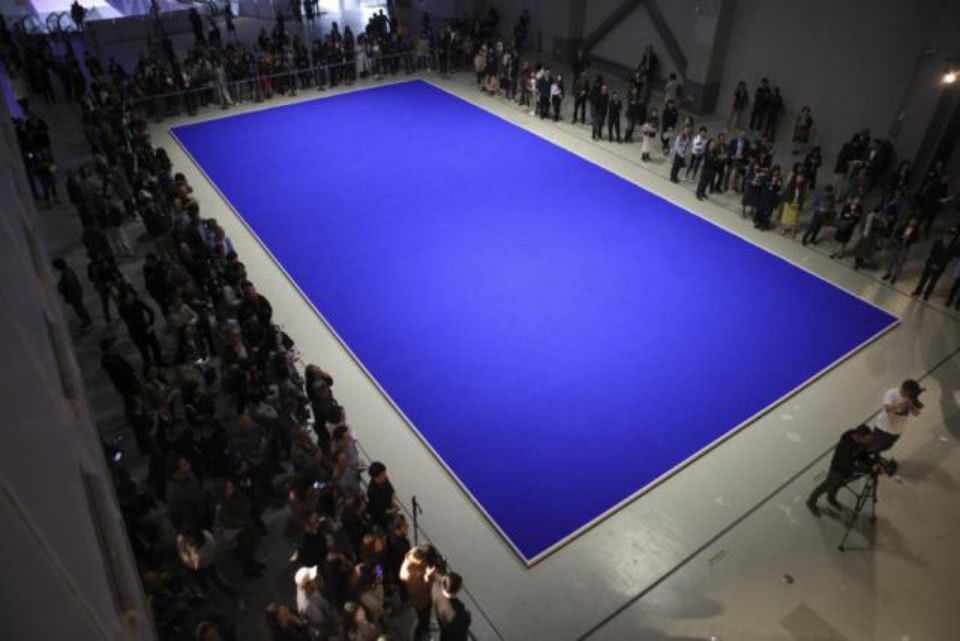The color blue is associated with two of Earth’s greatest natural features: the sky and the ocean. But that wasn’t always the case. Some scientists believe that the earliest humans were actually colorblind and could only recognize black, white, red, and only later yellow and green. As a result, early humans with no concept of the color blue simply had no words to describe it. This is even reflected in ancient literature, such as Homer’s Odyssey, that describes the ocean as a “wine-red sea.”
Egyptian Blue

Considered to be the first ever synthetically produced color pigment, Egyptian blue (also known as cuprorivaite) was created around 2,200 B.C. It was made from ground limestone mixed with sand and a copper-containing mineral, such as azurite or malachite, which was then heated between 1470 and 1650°F.
Fun fact: In 2006, scientists discovered that Egyptian blue glows under fluorescent lights(荧光灯), indicating that the pigment emits infrared radiation.
Ultramarine

The Ultramarine is calling “true blue”. It is meaning “beyond the sea”. It is began around 6,000 years ago when the vibrant. It was made from lapis lazuli. In medieval Europe this blue was noble and rare, and the people who could use it were the rich and noble, as it was considered to be just as precious as gold. But some artistic want to paint a beautiful painting. They would very brave to spend the money to buy it. Just like the Johannes Vermeer—who painted Girl with a Pearl Earring. He loved this color so much that he pushed his family into debt.
Cobalt blue

IN CHINA they like used this color in distinctive blue and white patterned porcelain and Vincent Van Gogh started using the new pigment as an alternative to expensive ultramarine.
Navy blue

Formally known as marine blue, the darkest shade of blue—also known as navy blue—was adopted as the official color for British Royal Navy uniforms, and was worn by officers and sailors from 1748. Modern navies have since darkened the color of their uniforms to almost black in an attempt to avoid fading. Indigo dye was the basis for historical navy blue colors dating from the 18th century.
Prussian blue

Also known as Berliner Blau, Prussian blue was discovered accidentally by German dye-maker Johann Jacob Diesbach. In fact, Diesbach was working on creating a new red, however, one of his materials—potash—had come into contact with animal blood. Instead of making the pigment even more red like you might expect, the animal blood created a surprising chemical reaction, resulting in a vibrant blue.
在神奈川冲浪图里面也运用了大量的普鲁士蓝,在毕加索的蓝色时期里也是运用很多普鲁士蓝。(在他的作品里普鲁士蓝是一种抑郁不开心的状态)
International Klein Blue

为了追求天空的颜色,法国艺术家伊夫·克莱因开发了一种哑光版的深蓝色,他说过这样一句话「我的画只用一种颜色在画布上刷涂,没有任何图案和颜色变化出现,只有十分均匀的色面。由于有某种特质蔓延整幅画,我寻求将颜色赋予各自的特色,因为我想到,每一种颜色里,都存活着一个世界,而这个世界通过我来呈示。我的画还呈现一种全然宁静的绝对和谐。」在他的做品里他将传统艺术媒介与创新技术相结合。他富有想象力的创作方法影响了概念艺术,极简主义和表演艺术的运动。
的确蓝色是一广阔的颜色,就像克莱因创作出这种蓝色的原因也是因为他喜欢天空的颜色之后才创作出来的,就像他说的“blue has no dimensions. It is beyond dimensions,” 在他的眼里蓝色并不是一个维度的或许在他的眼里蓝色是超越时空的,是一个贯穿世界的一个颜色。